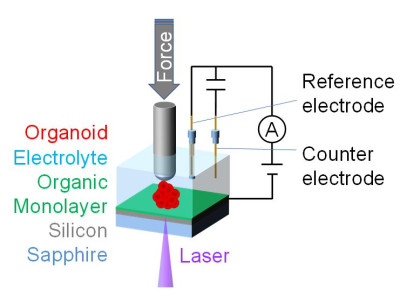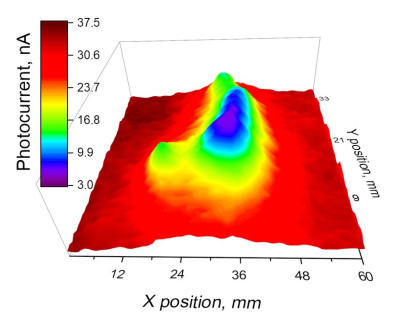News
Controlling the contact force between organoid and light-addressable potentiometric sensor enables highly sensitive monitoring of cardiomyocyte action potentials
21 December 2022


Monitoring of action potentials of beating cardiac cells called cardiomyocytes can give insights into physiological and disease mechanisms and aid the development of novel therapeutics for the treatment of cardiac arrhythmia, i.e., irregular heartbeats. Patch clamp measurements are the gold standard in electrophysiological measurements, but are difficult to operate and can only characterise a single cell at a time.
For the first, time we have succeeded in imaging individual cells with light-addressable potentiometric sensors (LAPS) and in monitoring the action potentials of neighbouring cardiomyocytes with a simple but effective setup that allows precise control of the contact force between the sensor and the cells. By improving the communication between cells and sensor, we achieved a more than tenfold increase in the sensitivity of LAPS for measuring electrical cell signals. This method holds great promise for investigating the interaction and synchronisation between neighbouring cells. LAPS is a label-free, electrochemical imaging technique that uses a laser scanning setup and can therefore be easily integrated with an optical microscope and may lend itself for in vivo applications in the future.
This work has been accepted by Biosensors and Bioelectronics: Rachel Jacques, Bo Zhou, Emilie Marhuenda, Jon Gorecki, Anirban Das, Thomas Iskratsch, Steffi Krause; “Photoelectrochemical imaging of single cardiomyocytes and monitoring of their action potentials through contact force manipulation of organoids”, Biosensors and Bioelectronics, https://doi.org/10.1016/j.bios.2022.115024.
| Contact: | Steffi Krause |
| Tel: | +44 (0)20 7882 3747 |
| Email: | s.krause@qmul.ac.uk |
| Website: | |
| People: | Steffi KRAUSE Thomas ISKRATSCH |
| Research Centre: | Bioengineering |
Updated by: Steffi Krause




